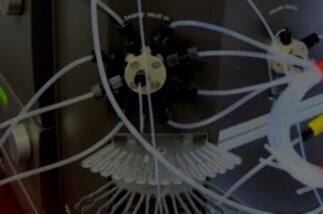
AKTA Pilot Service & Repair
You rely on your equipment. Your equipment should rely on ATG.
Analytical Technologies Group focuses on the maintenance and repair of only a narrow range of products, which includes the AKTA™ Pilot and other AKTA™ FPLC systems. This level of focus allows us to maintain expert knowledge on the AKTA™ line and the other products which we service. We also keep replacement parts in stock to help minimize your downtime whenever you need service. Our service contracts provide preventative maintenance to ensure your AKTA™ Pilot will have a long, productive life.
Tips for keeping your AKTA™ Pilot in good working order:
Inspect the system for leaks daily before use.
Avoid leaving buffer in the system. Perform the system cleaning procedure following each use and leave the system stored in 20% EtOH to inhibit growth between uses.
Be sure to prime the pump to remove trapped air any time you change buffers.
The pH probe should be calibrated prior to each use. If outside of the specification, >80% slope and +/-60 mV asymmetry, replace the probe.
Check the pH electrode for cracks or damage and consider replacing it once every six months.
Change the pump rinsing solution frequently. The rinsing solution should be 20% ethanol in deionized water.
Check to ensure the volume of rinsing solution in the storage bottle is not changing. If the volume has increased, it could indicate internal pump leakage. If it has decreased, the connectors may not be mounted properly.
Always keep the instrument and area around it clean of dust and keep the instrument free of chemical stains. It is much easier to keep the outside area clean than it is to troubleshoot and clean components when a failure occurs.
Having technical problems with your AKTA™ Pilot?
Fast Response
We provide very prompt responses to customers within one business day.
Fast Turnaround
Our field service engineers are expediently dispatched across North America & Europe to fulfill your service request.
Expert Staff
ATG’s highly trained, highly skilled staff ensure your instruments remain in optimal condition.
Parts In Stock
To minimize instrument downtime, we stock virtually all parts for the systems in which we specialize.
AKTA™ Pilot Troubleshooting Tips:
Most common measurement problems, such as baseline drift, ghost peaks, or general noise, are caused by the system being dirty or having air in it. A good first step to eliminate these causes is to clean the system and purge the lines. Degas all buffers before use. Centrifuge and / or filter your samples before loading.
A noisy signal may also indicate impure buffer. Check to see if the signal is noisy when running deionized water.
UV signal problems could also be caused by bad UV cell cable connections, bad UV fiber connections, or a dirty UV cell. Check the connections and clean the cell.
Irregular flow, low flow, or unstable pressure could be caused by a check valve. A faulty check valve can be identified by observing the pressure trace. If they require cleaning, it can be done in place with 100% methanol or, if that does not correct the problem, in an ultrasonic bath with 100% methanol.
If a membrane valve sets off a valve alarm, or if it leaks, it likely requires cleaning. Pump 15 ml of 1 M NaOH at 10 ml/min through the pressure sensor then leave it for 15 minutes before rinsing thoroughly with deionized water. If that does not correct the problem, the valve should be dismounted and cleaned in methanol in an ultrasonic bath.
A non-responsive air sensor likely requires cleaning. Pump 15 ml of 1 M NaOH at 10 ml/min through the pressure sensor then leave it for 15 minutes before rinsing thoroughly with deionized water.
If there are signs of liquid leaking between the pump head and the housing side panel, if the volume of rinsing solution regularly changes, or if there is a reduction in flow accompanied by noise from the pump, you may need to replace the piston assembly, liquid chamber and/or ceramic tube including O-rings of the leaking pump head.
A wavy or non-linear conductivity gradient may be due to mixer motor malfunction. Start the system at a low flow rate. You should be able to hear the mixer motor as well as feel vibration from it if you place a finger on the mixer chamber housing.
If the conductivity value seems incorrect, it could be improperly calibrated. Recalibrate the conductivity cell and ensure the 1.00 M NaCl calibration solution is correctly prepared.
An incorrect conductivity reading could be due to the temperature compensation not being properly set or the column not being equilibrated.
High back pressure could be caused by dirt in the flow path. This could be due to injection of dirty / unfiltered samples. Ensure samples are filtered. Clean the flow path, valves, and sensors as necessary.
Regardless of the problem, do not open the covers or separation systems. Accessing or replacing parts that are not intended for user manipulation should only be performed by trained service personnel.

